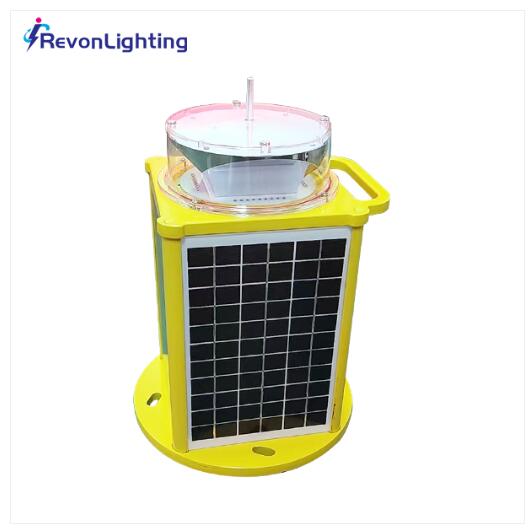Solar powered aviation lights play a critical role in enhancing safety and sustainability in airfield operations. With the aviation industry continuously striving to improve safety standards and reduce environmental impact, the use of solar powered lights has become increasingly prevalent. These lights not only provide essential illumination for airfield guidance and navigation but also contribute to sustainable practices by harnessing renewable energy. This article examines the significance of solar powered aviation lights, their key features, benefits, and the role they play in promoting safety and environmental responsibility in airfield operations.
Significance of Solar Powered Aviation Lights
Airfield lighting is essential for maintaining safe and efficient operations, especially during low visibility conditions such as night-time, adverse weather, or in remote areas with limited access to traditional power sources. Solar powered aviation lights offer a reliable and sustainable solution for illuminating runways, taxiways, and other critical areas of the airfield. By utilizing solar energy, these lights reduce reliance on conventional electricity, thereby minimizing operational costs and environmental impact. Additionally, their independent power supply ensures continuous functionality, even in the event of power outages or disruptions, enhancing the resilience of airfield lighting systems.
Key Features and Functionality

Solar powered aviation lights are designed to meet the specific requirements of airfield operations. These lights are equipped with high-efficiency solar panels that capture and convert sunlight into electrical energy, which is stored in onboard batteries for use during low light conditions or at night. The use of LED technology ensures bright, uniform illumination while consuming minimal energy, maximizing the efficiency of the lighting system. Furthermore, these lights are often equipped with advanced monitoring and control systems, allowing for remote status monitoring and adjustments, thereby enhancing operational flexibility and maintenance efficiency.
Benefits of Solar Powered Aviation Lights
The adoption of solar powered aviation lights offers a multitude of benefits for airfield operators, aviation authorities, and the environment. Some of the key benefits include:
Enhanced Safety and Visibility: Solar powered aviation lights provide clear guidance and visual cues for pilots during takeoffs, landings, and taxiing, significantly improving safety and situational awareness. By ensuring visibility in all lighting conditions, these lights contribute to the prevention of runway incursions and other potential hazards.
Sustainability and Cost Efficiency: The use of solar energy reduces the carbon footprint of airfield operations and decreases reliance on non-renewable energy sources. This not only aligns with sustainability goals but also leads to long-term cost savings by reducing energy consumption and operational expenses associated with traditional lighting systems.
| 111 | Solar Powered Aviation Light |
| 22 | 55 |
| 33 | 66 |
Reliability and Resilience: Solar powered aviation lights are designed to withstand harsh environmental conditions, including extreme temperatures, high winds, and heavy precipitation. Their robust construction and self-sustaining power source make them reliable and resilient, ensuring consistent performance in diverse operational environments.
Role in Promoting Sustainable Airfield Operations
Solar powered aviation lights play a pivotal role in promoting sustainable airfield operations by integrating renewable energy and advanced lighting technology. These lights support the aviation industry's efforts to minimize its environmental impact and achieve greater energy efficiency. Furthermore, their low maintenance requirements and long service life contribute to reducing the overall operational and maintenance costs, making them an economically viable and eco-friendly choice for airfield lighting.
Conclusion
In conclusion, solar powered aviation lights are integral components of modern airfield operations, offering a combination of safety, sustainability, and efficiency. By harnessing solar energy, these lights provide essential illumination while reducing the environmental footprint of airfield operations. Their reliability, cost efficiency, and environmental benefits make them a preferred choice for airfield lighting systems, contributing to safer and more sustainable aviation practices. As the aviation industry continues to evolve, the adoption of solar powered aviation lights is expected to play an increasingly prominent role in shaping the future of airfield operations and environmental stewardship.